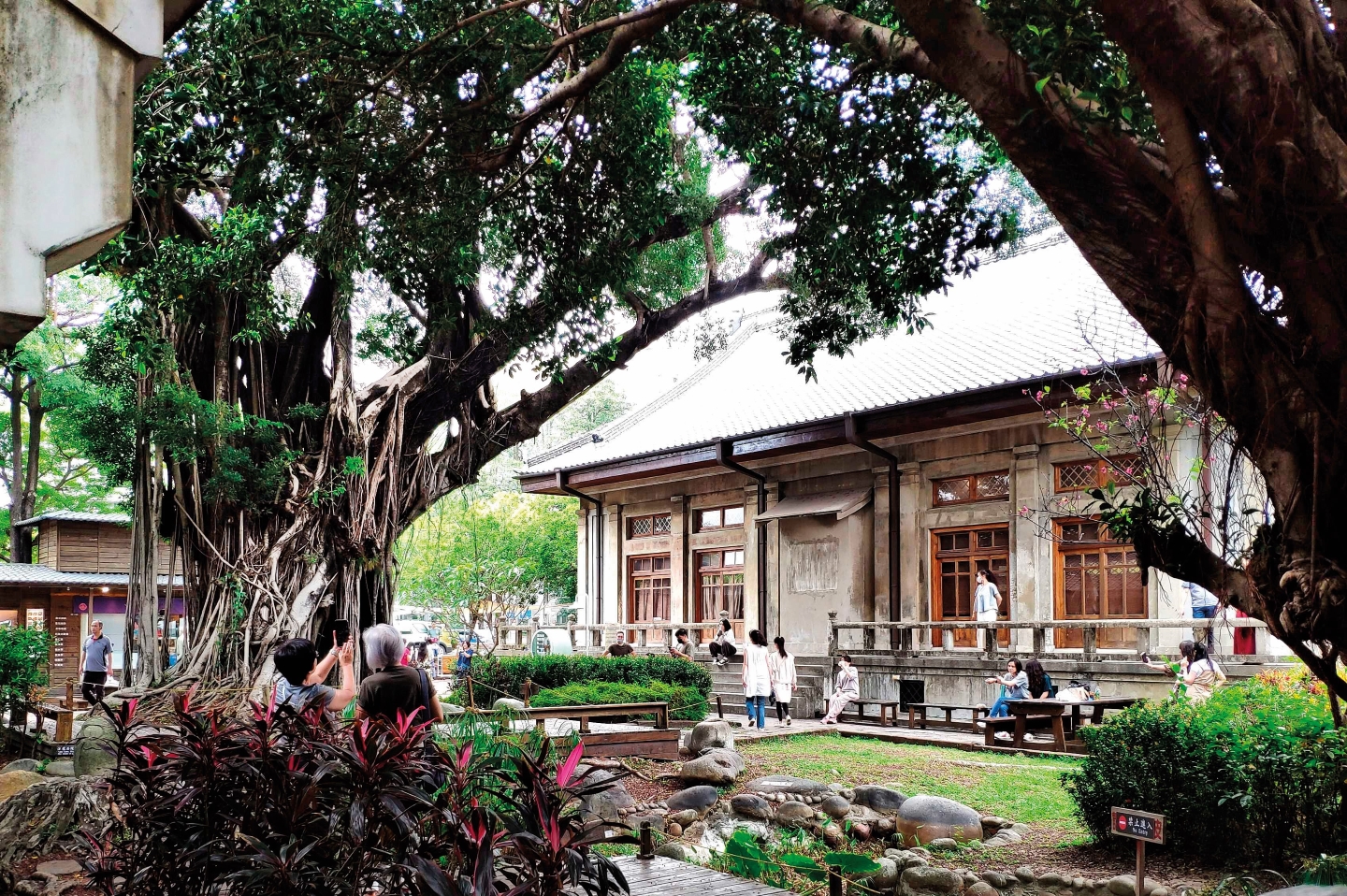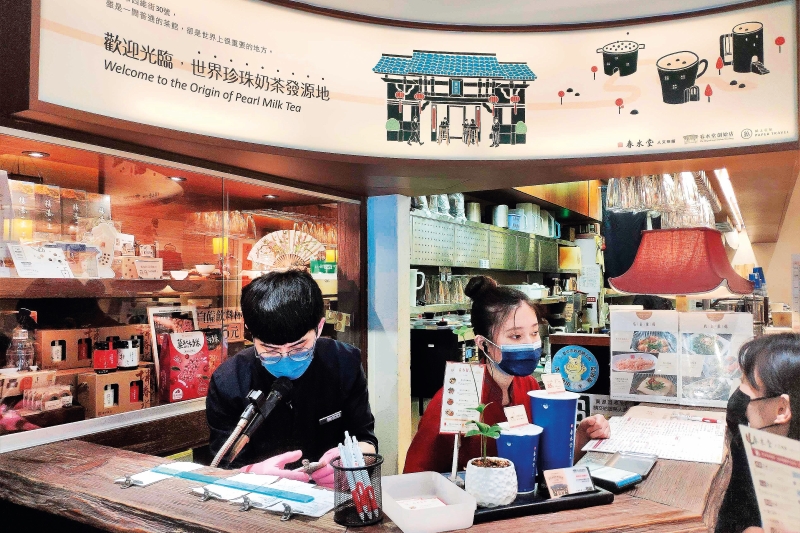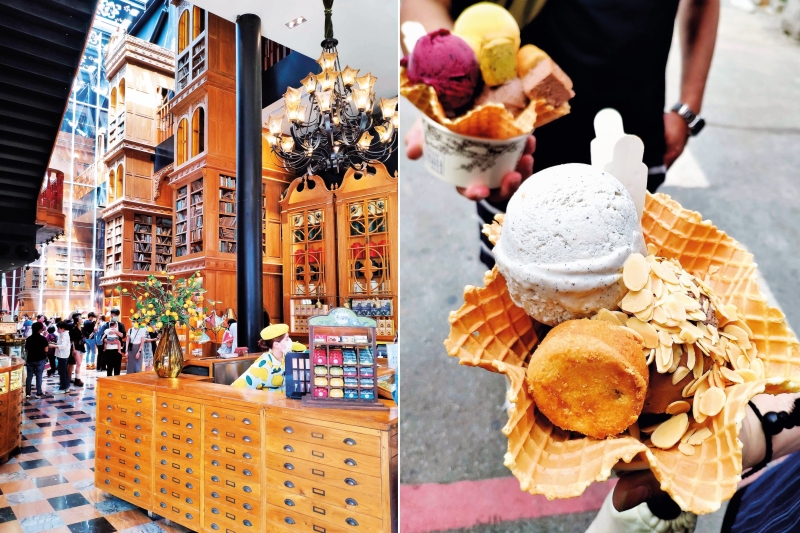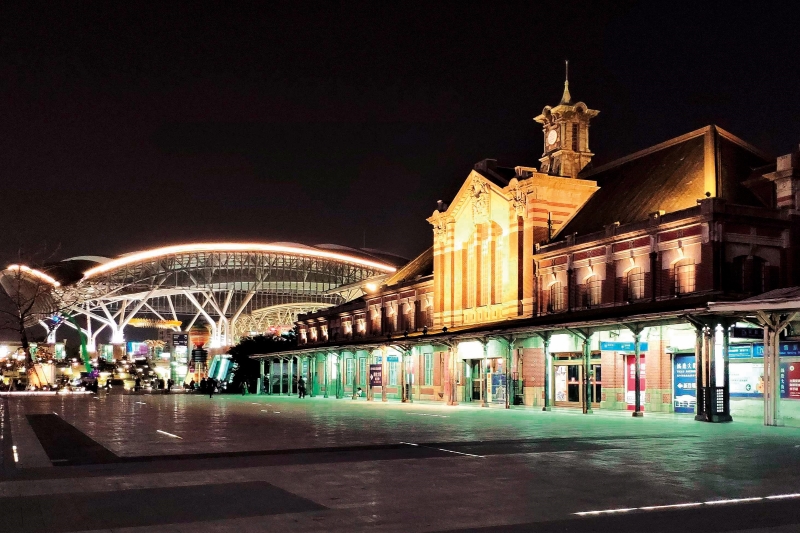
The Natural Way Six Arts Centre was originally built for Japanese wardens and police officers to practice their martial arts (All photos: Lee Yu Kit)
Think of Taichung, one of the largest cities in Taiwan, and you think of its street markets. The best known and likely the largest in Taiwan, with its thousands of stalls, is Feng Chia night market, which began modestly in the 1960s with a few stalls around Feng Chia University.
A distance from the city, the night market is served by the fledgling MRT system but there are others in the city, such as Zhongxiao, Hanxi and Yizhong, each with its own character and offering a bewildering array of street eats in the late evening, often with newly-minted innovations. At Zhongxiao, there is a teh tarik stall manned by a young man whose main draw is the tea-pulling act, which would make any mamak tea seller proud.
Feeling peckish during the day? There’s a plethora of food choices to drive you to distraction, from high-end restaurants serving exquisite food to roadside stalls selling an endless variety of street food. The money goes where the locals queue and, for authentic local fare, you can’t go wrong with the food courts in the public markets.
For food, one of the more popular choices is the Second Public Market food court, where orderly queues form for the carrot cake and Taiwanese braised pork rice around lunchtime. The Fifth Public Market’s oyster porridge with nam yue fried pork and pickled cabbage attracts a queue that extends to the street outside. But service is brisk and the food is well worth the wait.
Street food aside, there are a couple of trend-setting food destinations in Taichung. One of these is the purported birthplace of that youth-oriented global-spanning phenomenon, bubble tea, also called pearl milk tea or boba tea.
There is a claim that bubble tea originated in Tainan, Taiwan. To any Taichung resident, that is heresy because bubble tea started in their city, specifically in the Chun Shui Tang tea room, which proclaims prominently, “Welcome to the origin of Pearl Milk Tea”.
chun_shui_tang.jpg

Chun Shui Tang is no fast-food bubble tea shop. The shop is classy and subdued, a bona fide restaurant with a menu of meals and varieties of bubble tea. You can even make your own boba in a section of the shop.
Bubble tea takes a while to be made and is served in elegant tall glasses at your table. My excellent handmade noodles arrived well before the Pearl Milk Tea and Uva Black Tea, which looked like a glass of beer with foam head.
Though no fan of bubble tea, I found the Pearl Milk Tea to be a thing of beauty, an evenly mixed creamy colour with small even orbs of dark tapioca pearls. Both drinks, with reduced sugar option, were superb, with the classy mouth feel of carefully made quality products rather than cursory fast-food items served with too much ice and sugar in plastic throwaway containers.
Another wildly popular and trendy food stop is the relatively recent phenomenon, Miyahara Ice Cream, and not just for the ice cream either. The ice cream parlour, with its super-large multicoloured, multiflavoured ice cream, is housed in a historical building, once Miyahara Opthamologist’s clinic in 1927, which was given an extreme makeover after it was purchased by a Taichung confectionery company in 2010.
Ostensibly, a gift shop of beautifully crafted and delicately wrapped confectionery, the airy interior of the shop is something to behold, with soaring wooden bookcases, chandeliers, mirrors, antique furniture and brass insects embedded in the floor — a Harry Potter Hogwarts fantasy come alive, tempting visitors to take a small piece of gift-wrapped fantasy home, be it a bonbon or another Taichung specialty — the suncake. There is even a Michelin Bib Gourmand-awarded restaurant on the upper floor.
So successful has it been that it was extended further up the road in an old bank building, remade into the swanky Fourth Credit Union Coffee Shop. You can have coffee and Miyahara ice cream at a former bank teller counter, near the enormous former safe and see-through cabinet where a machine makes the waffles.
miyahara_ice_cream.jpg

Metal tendrils extending from the wall, brass bars and knobs from old bank counters, coins and oversized brass ants embedded in the floor, and neon lighting impart a vaguely dystopian sci-fi buzz — perfect for your Instagram feed.
If you look up from your plate of food at the bigger picture, Taichung has loftier ambitions than to be a street food and trendy food centre. It has also become a cultural and arts centre. For starters, it possesses the requisite temples of the fine arts and culture in designer showpiece buildings.
The National Museum of Natural Science, the National Taiwan Museum of Fine Arts, the Taichung Outdoor Amphitheatre, the National Taichung Theatre and the National Taiwan Symphony Orchestra are all domiciled in new, large, shiny buildings, so even the non-culture vulture can indulge in a photo or two outside these sleek monuments.
Beyond the new and shiny, however, the city has embraced its history, weaving its past into its present story. That inevitably includes the period when Taiwan was under Japanese rule from 1895 to 1945, when much of the city infrastructure was planned and developed under Japanese administration.
The Taichung Railway Station is a modern domed building visible from miles away, bustling with people and trains pulling in and out of the station. In its shadow is the much smaller, old Taichung Railway station, a Western-style brick building, gracious and elegant in a way that modern buildings are not, for it was built in 1917 during the Meiji Restoration period of the Japanese government.
A section of the old platform has been preserved, with old train carriages sitting on rails, as if they might one day pull away into the twilight zone. A weekend flea market flourishes on the old platform. Visitors sit for live performances on benches made from old wooden railway sleepers on former railway tracks, a parallel universe to the modern railway station that looms over it.
Similarly, the Taichung Cultural and Creative Industries Park exudes a retro, industrial buzz, with colourful street markets and modern sculpture juxtaposed with bleak concrete walls and industrial metal structures of a bygone era. The 5.6ha complex was originally a Japanese brewery in 1916, its buildings now repurposed as exhibition halls for crafts and cultural products.
taichung_station_night.jpg

Not far away, the Natural Way Six Arts Center, a haven of greenery and large trees in a small compound of old buildings was built in 1937 as a place for Japanese wardens and police officers to practise their martial arts. Today, it is a quaint retrospective that holds courses in archery, literature or the ancient stringed instrument, the guqin. More than that, it is a contemplative piece of the past in the modern city.
One of the few artefacts that remain of the Qing Dynasty preceding Japanese rule is a tower marking the old north gate of the city. The tower is a fragment of the past in Taichung Park, a historical urban park of 10ha, of open grassy areas and large trees set in the middle of Taichung. Families, wedding parties and city dwellers come to the park to while away their time in the shade of the trees, or to go boating in the artificial lake, with its 1,908 pavilions.
The gentler, gentrified aspect of city life has begun to extend to the environment as well. Perhaps the most visible project is the transformation of a once smelly, polluted waterway into a clean urban park with landscaped surroundings, in a nod to urban renewal probably best exemplified by the Cheonggyecheon stream in Seoul, South Korea.
Clean, clear water flows in the rehabilitated Liuchuan River, with trees, shrubs and reeds flourishing by the river banks, forming the Liuchuan Riverside Walk, an urban oasis of greenery and flowing water amid the concrete highways and tall buildings that surround it.
The Art Parkway and Calligraphy Greenway are strips of greenery slicing through the concrete jungle, extending to the riverside, bringing much needed greenery to parts of the city. Most promising are the spontaneous outbursts of creativity started by individuals that have become unexpected hits. Such is the Rainbow Village, a collection of dilapidated houses given a lease of life by a single man who painted them in bright colours and artwork, not expecting his project to become a must-see for locals and visitors alike.
Rainbow Village has been closed since late 2022 for ongoing maintenance, but the Painted Animation Lane, a narrow alley with cartoons and manga characters on its walls, echoes the unexpected spontaneity of artistic expression.
Within sight of the Taichung Railway Station is a narrow waterway, an urban drainage canal, which just a couple of years ago stank with industrial and household wastewater. Landscaping, walkways and plants have transformed it into the Shin Sei Green Waterway, a cooling, green haven that is emblematic of the changes transforming the once industrial city of Taichung.
This article first appeared on Oct 16, 2023 in The Edge Malaysia.


